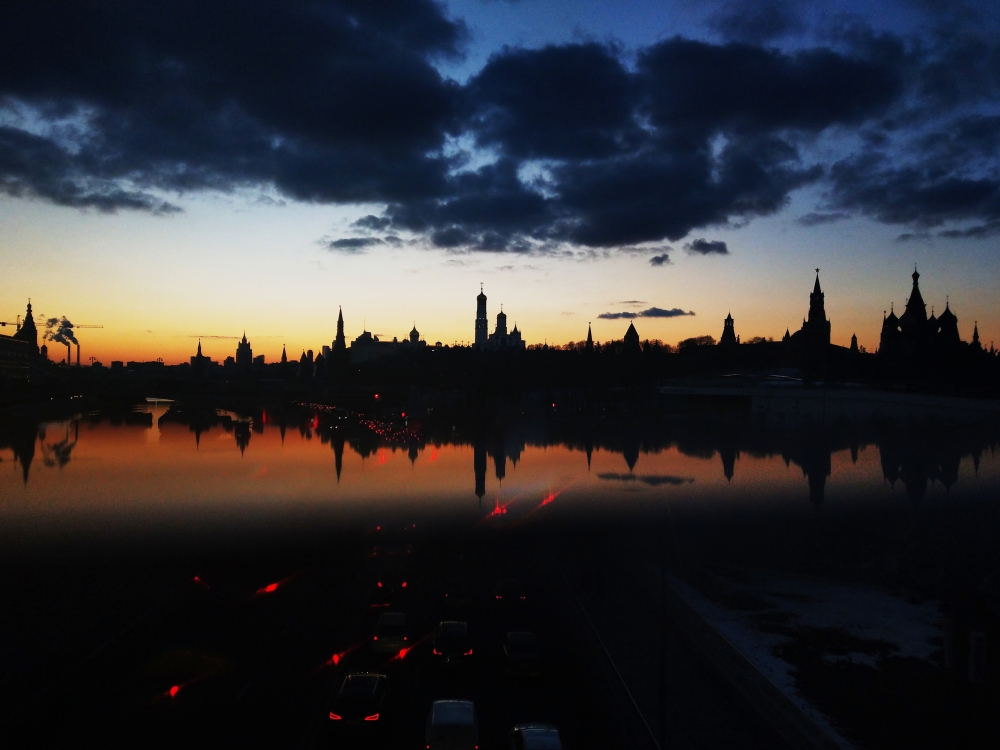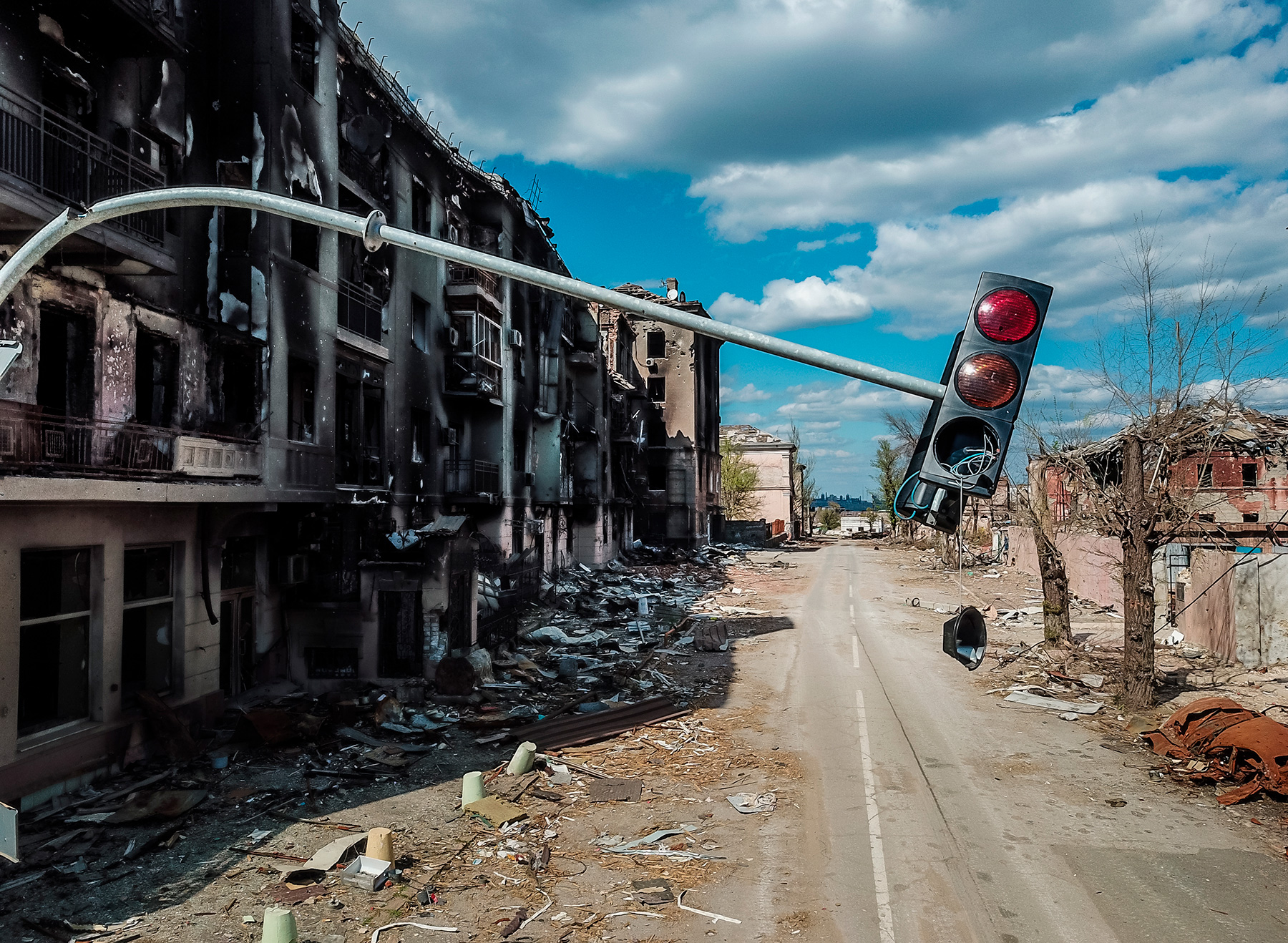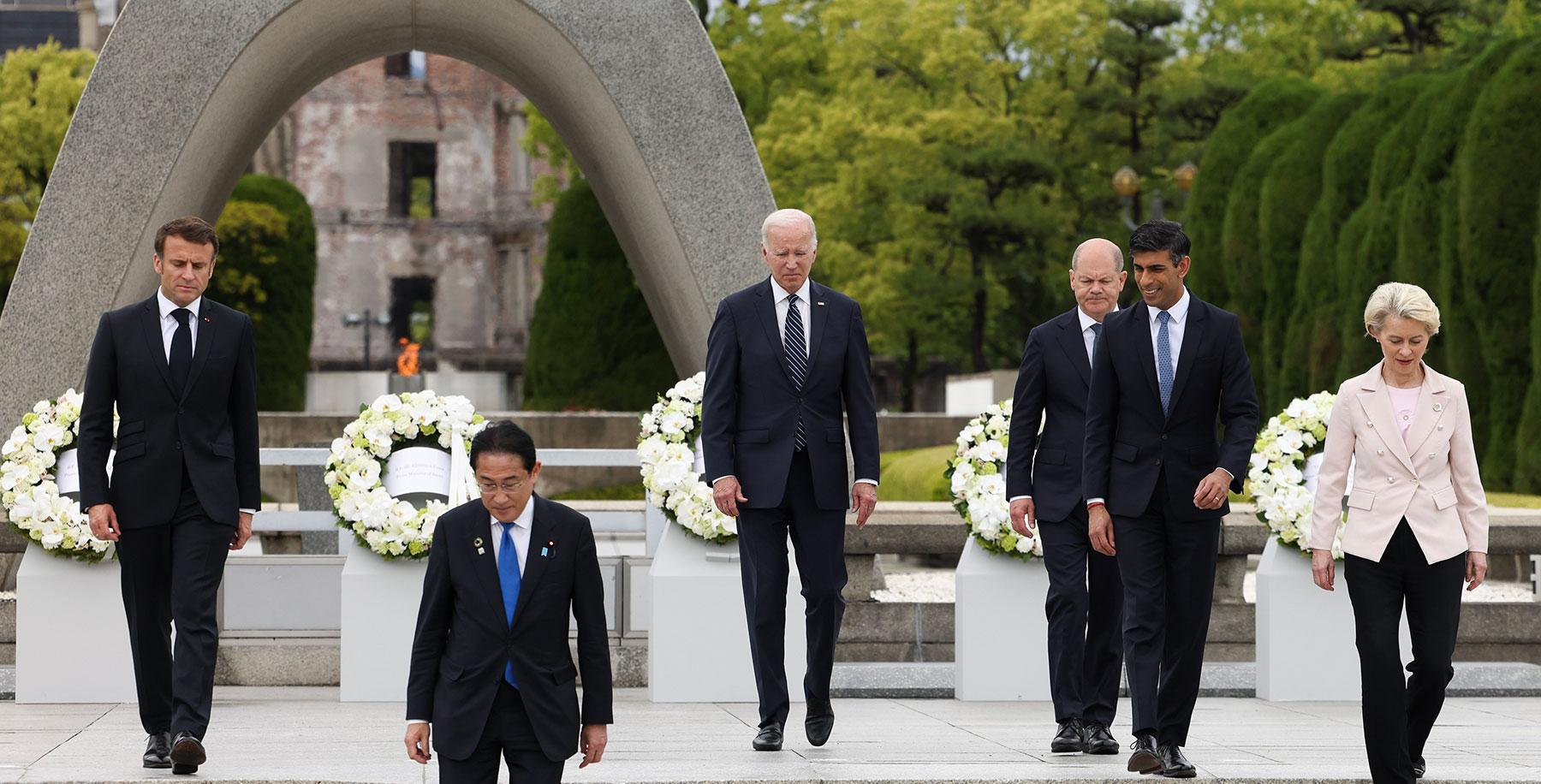The unfortunate conflict between Russia and Ukraine started almost a year and a half ago, and many experts in Russia, Europe, Asia, in the United States claimed that this conflict was a game changer. It was being said that the world would never be the same again as revolutionary shifts in global politics and in the global economy had been triggered. But then, almost the same narratives have been used for the COVID-19 pandemic. It is typical for experts and for politicians to exaggerate and dramatise crises.
One year and four months after the beginning of this conflict, if just one word were to be used to describe the preliminary outcomes of this dramatic crisis, the word would be resilience. All the participants, as also the international system at large, have demonstrated a remarkable degree of resilience.
Looking at the international system at large, there have been major disturbances. However, the impact has not been as catastrophic as it is being made to look. The global energy crisis is back at approximately the same level that it was on the eve of this crisis, just like the prices of major food items. Unlike the financial crisis of 2008-09, there has been no global recession. Some financial institutions turned out to be shaky, with banks in the U.S. and Switzerland collapsing, but the system remains intact.
Whatever the outcome of this conflict, it will have a formative impact on the international system. As regards the future, arguably the most important independent variable is the current deglobalisation cycle and whether it will continue for a long time or is it coming to an end. Will we see a new attempt at globalisation in terms of an EU rise of direct foreign investments, international trade, international migrations and trans-border information exchanges? This image is unclear, but it will depend on major powers. And, of course, India remains one of the key actors.
It’s trivial to say that India is the largest global democracy; it can also be argued India is the largest global swing state in the sense that India is trying very carefully to balance the two dimensions of its foreign policy. On the one hand, it remains a major Eurasia power, and this year it presides over the Shanghai Cooperation Organization. It is also an active member of BRICS. At the same time, India has its Indo-Pacific face where it is very active and within which it invests a great deal into the bilateral relations with the United States with other maritime countries of the Indo-Pacific region. The position taken by India in preparation for the G 20 meeting, that will take place later this year will be a very important indicator of Indian ambitions and aspirations. It can only be hoped that the Indian position will not be limited to mostly tactical, narrowly defined national security or national development issues, but it will involve more ambitious, more general ideas on reforming the global world order. This is a unique opportunity for India to demonstrate its ability to perform not as a regional or a continental but as a global leader. This year will tell us a lot about the future direction of Indian foreign policy, especially considering that India will face elections next year. It is hoped that the continuity in Indian foreign policy, including its relations with the Russian Federation, will continue.
The unfortunate conflict between Russia and Ukraine started almost a year and a half ago, and many experts in Russia, Europe, Asia, in the United States claimed that this conflict was a game changer. It was being said that the world would never be the same again as revolutionary shifts in global politics and in the global economy had been triggered. But then, almost the same narratives have been used for the COVID-19 pandemic. It is typical for experts and for politicians to exaggerate and dramatise crises.
Post Ukraine Global Scan
One year and four months after the beginning of this conflict, if just one word were to be used to describe the preliminary outcomes of this dramatic crisis, the word would be resilience. All the participants, as also the international system at large, have demonstrated a remarkable degree of resilience. The resilience of the Ukrainian society and the Ukrainian political system, the resilience of the Ukrainian Armed Forces was quite spectacular. Not many experts predicted that Ukraine would be in a position to continue its fight. Russia, too has displayed immense resilience. A year ago, there were speculations that Russia would economically collapse under the burden of unprecedented sanctions, that the Russian social and economic systems demonstrate their fragility, that the public support for President Putin would plummet, and the political opposition would catch the momentum to complete a regime change in Moscow. Nothing like that happened. Considering the basic macroeconomic statistics, the situation in Russia is under the control of the government—in fact, the country has outperformed some of its Western neighbours in dealing with multiple economic challenges.
Of course, sanctions do bite, but again, Russia has displayed a degree of flexibility and adaptability in its economic system-looking at the rates of inflation and the federal budget; both have been balanced. Similarly, unemployment is under control. The country is clearly not close to a major collapse or an implosion. Russia demonstrated its resilience and its ability to mobilise resources. Many European nations and the United States, of course, have also demonstrated these attributes. They were very fast in introducing unprecedented sanctions against Russia, which underscores the cohesion of the West seen at the beginning of last year and which continues. The U.S. has consolidated the Western alliance under its leadership. A global coalition of liberal democracies emerged that was not restricted to transatlantic relations but included countries like Japan, South Korea, Australia and New Zealand. Even though there are certain dissenting voices in the West, there are no signs that the cohesion of the West will crumble anytime soon. The term resilience can also be used to also describe the position of the Global South because the Global South has demonstrated a persistent intention not to be involved in the conflict between Russia and the West. This has been demonstrated at various international fora, and there has been a constant flow of important visitors from the Global South to Moscow, clearly demonstrating that the position of the Global South is different from the West. This has been prompted by interests and differences in the perceptions of the narratives that exists between the South and the North.
Prevailing International Environment
Looking at the international system at large, there have been major disturbances. However, the impact has not been as catastrophic as it is being made to look. The global energy crisis is back at approximately the same level that it was on the eve of this crisis, just like the prices of major food items. Unlike the financial crisis of 2008-09, there has been no global recession. Some financial institutions turned out to be shaky, with banks in the U.S. and Switzerland collapsing, but the system remains intact. What will happen next? There are a couple of independent variables that must be kept in mind. Firstly, with the military conflict in the midst of the so-called Ukrainian counter-offensive, whose end result is too early to predict, the outcomes of these conflicts are not going to end well for the Ukrainians. So far, not a lot of space has been gained by Ukrainians. Their losses are heavy, but we might still see some surprises from the Ukrainian side. However, if there are no dramatic gains by early or mid-July, probably this counter-offensive will lose steam. Whatever the outcome of this conflict, it will have a formative impact on the international system. Another independent variable is the dynamics of U.S.-China relations. At the level of the economic leadership in the two governments, both sides are doing their best to prevent a breakdown. But on the other hand, Taiwan remains a major bone of contention. Unfortunately, the worst-case scenario cannot be ruled out in the shape of a major military conflict between the two nations. The sustainability of Western cohesion is also under the scope. Some say this cohesion is situational, tactical rather than strategic. It is related to Russia only and is not correlated to China. But this assumption remains to be tested, especially in light of next year’s U.S. Presidential elections. As regards the future, arguably the most important independent variable is the current deglobalisation cycle and whether it will continue for a long time or is it coming to an end. Will we see a new attempt at globalisation in terms of an EU rise of direct foreign investments, international trade, international migrations and trans-border information exchanges? This image is unclear, but it will depend on major powers. And, of course, India remains one of the key actors.
Conflict Termination in Ukraine?
That Russia can sustain the conflict is beyond doubt and is supported by three factors. First is the military hardware. Russia has an advantage because it has a bigger industrial base than Ukraine, and this industrial base is not affected by the conflict, at least so far. Ukraine is trying to bring the war to Russian territory, but these incremental attempts are not very successful. On the other hand, Ukraine receives a lot of military hardware from the West. The West is gradually escalating its engagement in the conflict. They started relatively small and moved from mostly defensive systems to javelin ATGMs to tanks, and right now to F-16s. However, this involvement has its limits. Europe depletes its stocks of weapons and munitions very fast. President Putin maintains that Russia has efficiently destroyed close to 1/3 of what the world has supplied to Ukraine; of course, it’s very hard to make accurate assessments. Second is the issue of military personnel. It’s not just about how many people can be recruited or mobilised but how many trained soldiers you can bring to the trenches. And here, both sides have certain limitations. The Russian leadership has argued against the second phase of mobilisation. But there are volunteers and contractual servicemen. There is no shortage of personnel on the Russian side. On the Ukrainian side, many people still can be brought to the frontline, but the quality of the soldiers can be questioned. Ukraine is bringing soldiers to battle with no real training, which is the reason for their high losses. The third and most important issue is social cohesion and public psychology—how people feel about the war, whether they believe that their side is winning or are starting to lose hope. It is difficult to make an accurate assessment because of the lack of reliable sociological data, especially on the moods of the Ukrainian population. But this resilience is not limitless-clearly both sides are getting into some red lines that they should not cross. A lot will depend on the West’s engagement and whether the world decides to engage in this conflict more systematically. But this is dangerous because it could mean group escalation to the level of a nuclear war. Some voices in Warsaw or Baltic states argue for direct NATO engagement. But this is not the predominant NATO position.
And this is not what is supported by the United States. Therefore, we will continue to see this incremental escalation by the West, but without an attempt to start a direct military confrontation with Russia. As regards the endgame, there are two narratives in Russia. First is the minimalist narrative, which implies that the goal of the military operation is, the demilitarisation and de-Nazification of Ukraine and to protect the people of Donbas. And if, indeed, these are the goals, then probably, Russia should focus on securing the regions that have joined the Russian Federation recently. That implies taking hold of the territories left in Ukrainian hands and creating a buffer zone for the West. But the other narrative, it’s not about territory. It’s about the nature of the political regime in Ukraine. If this regime is not changed, we will see an emphatically anti-Russian revanche seeking irredentist leadership, which will look for opportunities to start it all over again. The only way to avoid it is to make sure that some political changes will turn Ukraine into a country that is not as hostile to Russia as it is right now and where the Western influence will not be as significant as it is today. The Russian position might turn out to be tougher and more rigid, but it is probably too early to talk about the final settlement. The immediate objective should be de-escalation or even escalation management to assist in what can later be turned into a lasting political peace settlement.
India as a Swing State
It’s trivial to say that India is the largest global democracy; it can also be argued India is the largest global swing state in the sense that India is trying very carefully to balance the two dimensions of its foreign policy. On the one hand, it remains a major Eurasia power, and this year it presides over the Shanghai Cooperation Organization. It is also an active member of BRICS. At the same time, India has its Indo-Pacific face where it is very active and within which it invests a great deal into the bilateral relations with the United States with other maritime countries of the Indo-Pacific region. The position taken by India in preparation for the G 20 meeting, that will take place later this year will be a very important indicator of Indian ambitions and aspirations. It can only be hoped that the Indian position will not be limited to mostly tactical, narrowly defined national security or national development issues, but it will involve more ambitious, more general ideas on reforming the global world order. This is a unique opportunity for India to demonstrate its ability to perform not as a regional or a continental but as a global leader. This year will tell us a lot about the future direction of Indian foreign policy, especially considering that India will face elections next year. It is hoped that the continuity in Indian foreign policy, including its relations with the Russian Federation, will continue.
India-Russia Relations
The current imbalances in the bilateral trade between Russia and India are an important factor. In Russia, there is a thought process: instead of trying to balance the trade, Russia should try to convert its trade surplus into direct foreign investments in India to produce goods and services that Russia might need. And by doing that, Russia will move beyond its traditional pattern of economic cooperation beyond trade to more industrial cooperation, which is a more advanced format of economic cooperation. However, there is criticism of this proposal on two counts. First, it is argued that there are simply too many protective regimes in India; for instance, India opted out of the Regional Comprehensive Economic Partnership. This would make it difficult to calibrate Russian investments so they can serve Russian markets. And the second argument, which is probably more serious, is that this investment will be difficult because Indians are likely to be concerned about secondary sanctions considering that India is well integrated into the global economy, including that of its Western partners. Russian investments in production sites in India could come under Western sanctions, making them unattractive for Indian partners. To succeed, both sides must work on specific issues and opportunities and enhance cooperation. They will have to go beyond the traditional patterns and traditional areas of cooperation. For example, India will definitely continue diversifying its arms import, and Russia will face serious competition in other traditional areas in which it intends to work with Delhi. But new opportunities also present themselves. One such enterprise could be a Russian Indian research project to compare our experiences in Africa or the Middle East. Perhaps multilateral initiatives would be more productive and more efficient than our unilateral attempts to get into African or Middle East markets and to work with our partners in these regions of the world.
First published in INSIGHTS Magazine, by Synergia Founfation.







